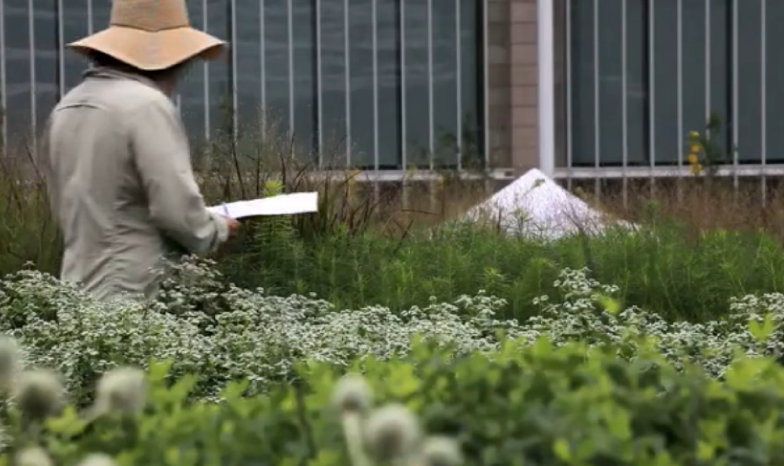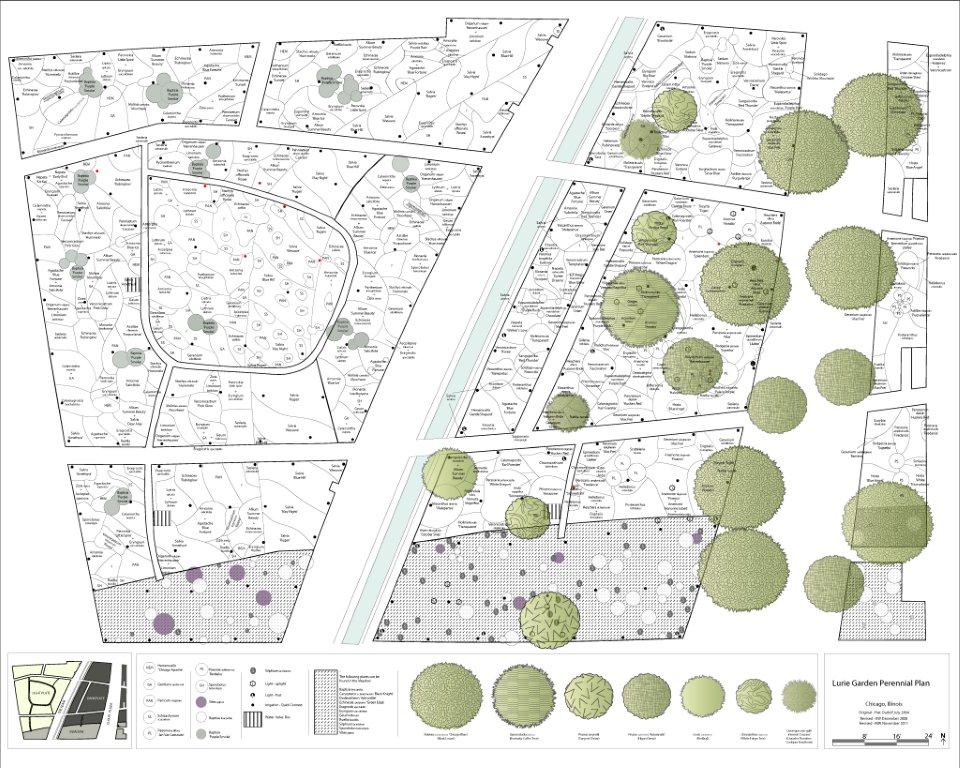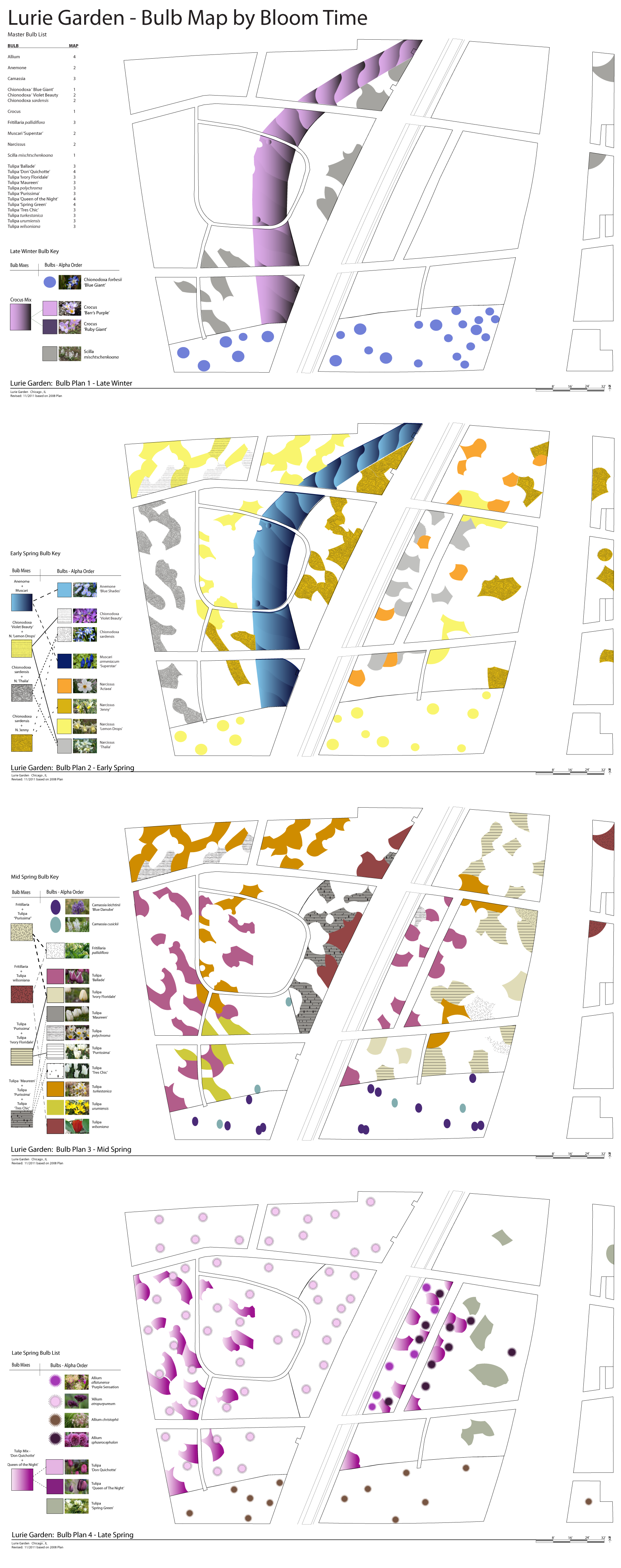By The Lakota Group | September 27, 2012
Last year, I had the opportunity to intern at the Lurie Garden in Chicago’s Millennium Park, designed by Gustafson Guthrie Nichol and Piet Oudolf. While working in the garden, I was reminded daily of a design element that distinguishes the practice landscape architecture from other design disciplines –change in the landscape over time.
Completed in 2004, the Lurie Garden is a stylized landscape reminiscent of a prairie, evoking the region’s ecological past. A host to 220 different kinds of perennials, the 5-acre garden is quite diverse, making it visually interesting year around. At the same time, this diversity demands a high level of skill from its caretakers. As the plants emerge from the ground in spring, it can be challenging to identify which plants are official residents of the garden and which are weeds. Using a garden map from 2007, it was immediately clear that plants had been added, subtracted or had substantially shifted in the four preceding years. So I offered to re-survey and create an updated map to aid the gardeners in their efforts.
The process of mapping the garden was a bit like visiting Alice in Wonderland. I would sketch out drift formations in an area and then return weeks later only to find the area seemingly transformed. New plants appeared out of nowhere, or simply demanded more space as they reached their seasonal peak, while other plants receded for the season. Trying to capture such a moving target in a single map was like trying to record an orchestra by painting a picture of the violinist.
There were also subtle signs of long-term change visible in the garden, brought on by many different forces. Wind carried seeds of Digitalis ferrengia and Chasmanthium latifolium to new areas of the garden, creating small colonies. Plants such as Anemone ‘Splendens’ and Geranium soboliferum traveled by rhizome beyond their allotted space, while more well behaved plants, such as Geum triflorum, patiently waited beneath for another glimpse of the sun. Tradescantia ohiensis and Briza media were such boundary-pushers that they were labeled outlaws and banished from the garden altogether, while new species, not available in the nursery industry five years earlier, were introduced in their place.
Animals also helped the garden along in its evolution. Goldfinches, Red-winged blackbirds and many other bird species served as pollinators and seed transporters, occasionally delivering random plants to the garden not in the original plans. Asclepias incarnata, for example, was not initially in the design, but in certain areas of the garden it is allowed to persist, encouraging the presence of Monarch butterflies. Several species of bees and other insects were constantly interacting with the plants, sometimes bringing about genetic change, especially in cultivars of plants such as Eupatoriadelphus and Echinacea, whose offspring commonly reverted to the species. And then there were those the dastardly rabbits! I once went searching for drifts of Aster October Skies only to find remnants nibbled to stubs. Later in the season the rabbits moved on to Amsonia tabernaemontana, perhaps keeping these plant in check as they plotted to take over the nearby Calamintha nepeta as they had in other areas of the garden.
Of course the animals with the most impact are human. The role of the gardener is to witness this ongoing change and take advantage of the unforeseen opportunities it presents. Piet Oudolf summarized it best during a visit – the gardeners do not simply pull weeds, they are the editors, constantly making decisions – ‘is this a plant or is this a weed?’ The Lurie Garden’s director, Jennifer Davit, and horticulturalist, Laura Young, are the curators, guiding the evolution of the garden as it unfolds with a strong knowledge of plants, a keen eye for aesthetics and a deep understanding of the original design intent.
And what are the implications for the role of the designer? Because change is the only constant in landscape, the role of the designer is unlike that of an architect or furniture designer whose aim is to create something outside the bounds of time. At their best, landscape architects embrace the dynamics of their medium, putting forth a framework through which the change can be gauged and celebrated. The landscape architect sets a process in motion, but ultimately, every design is a collaboration with fellow designers, curators, forces at play and most importantly, the passage of time.



